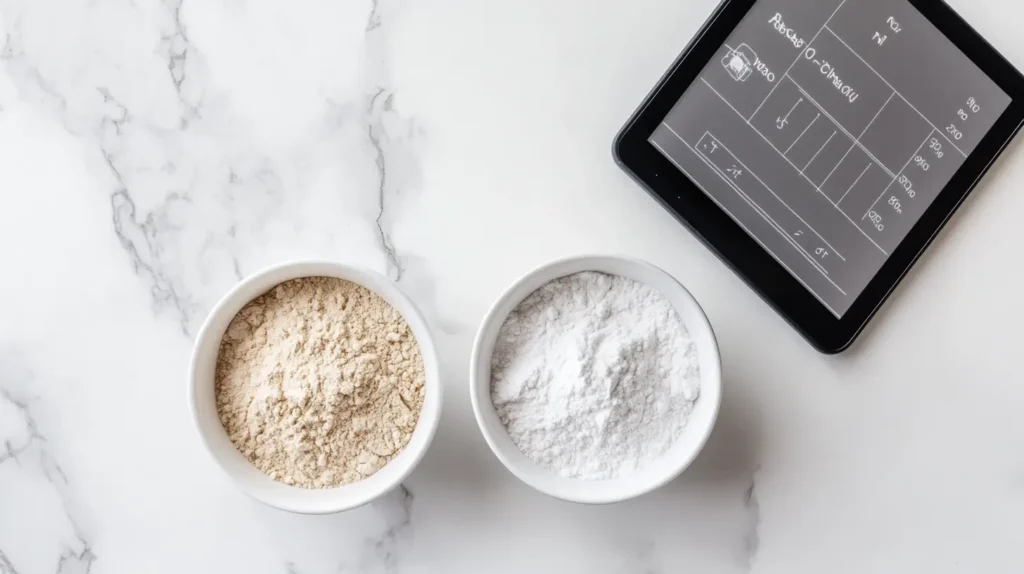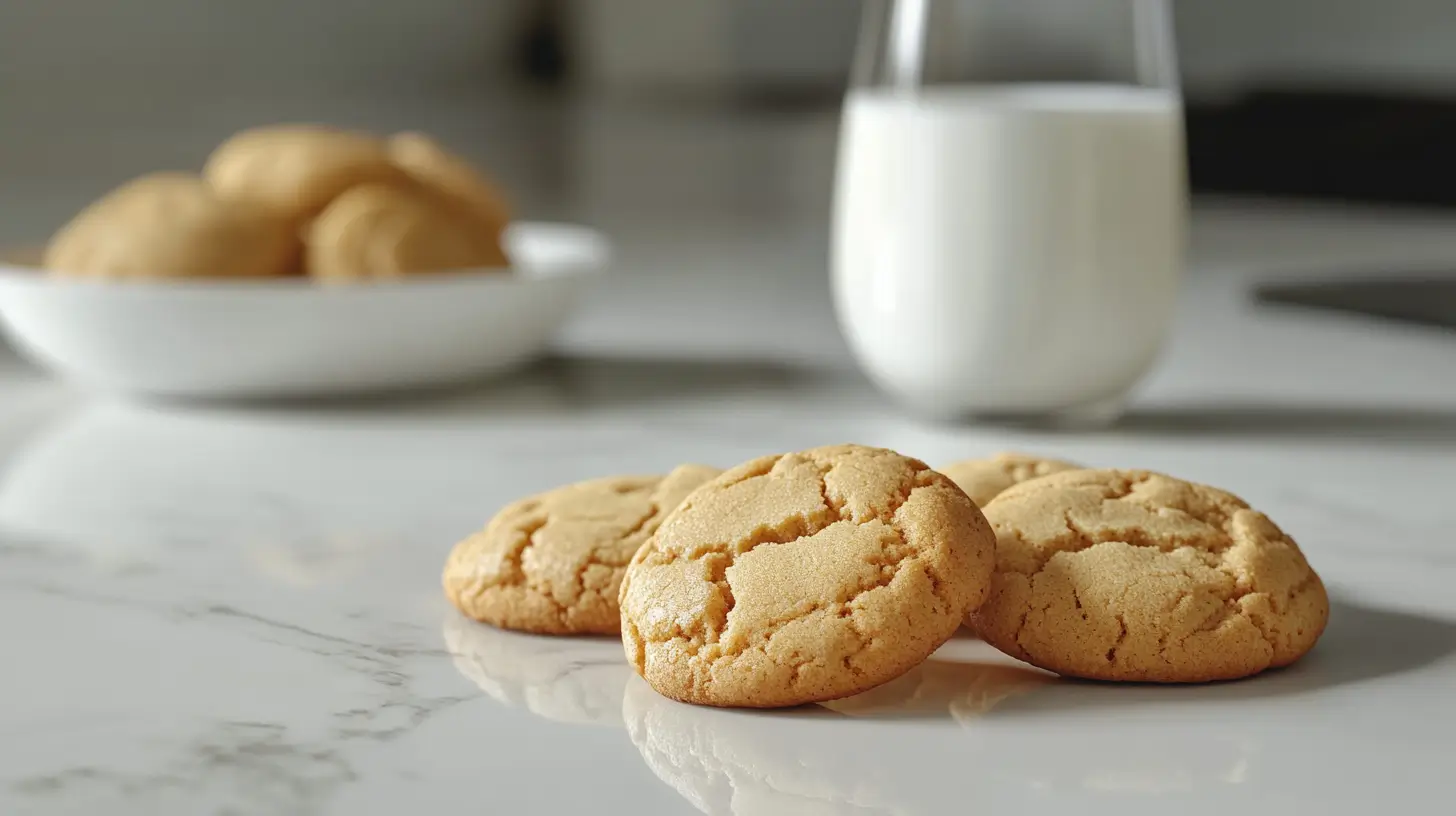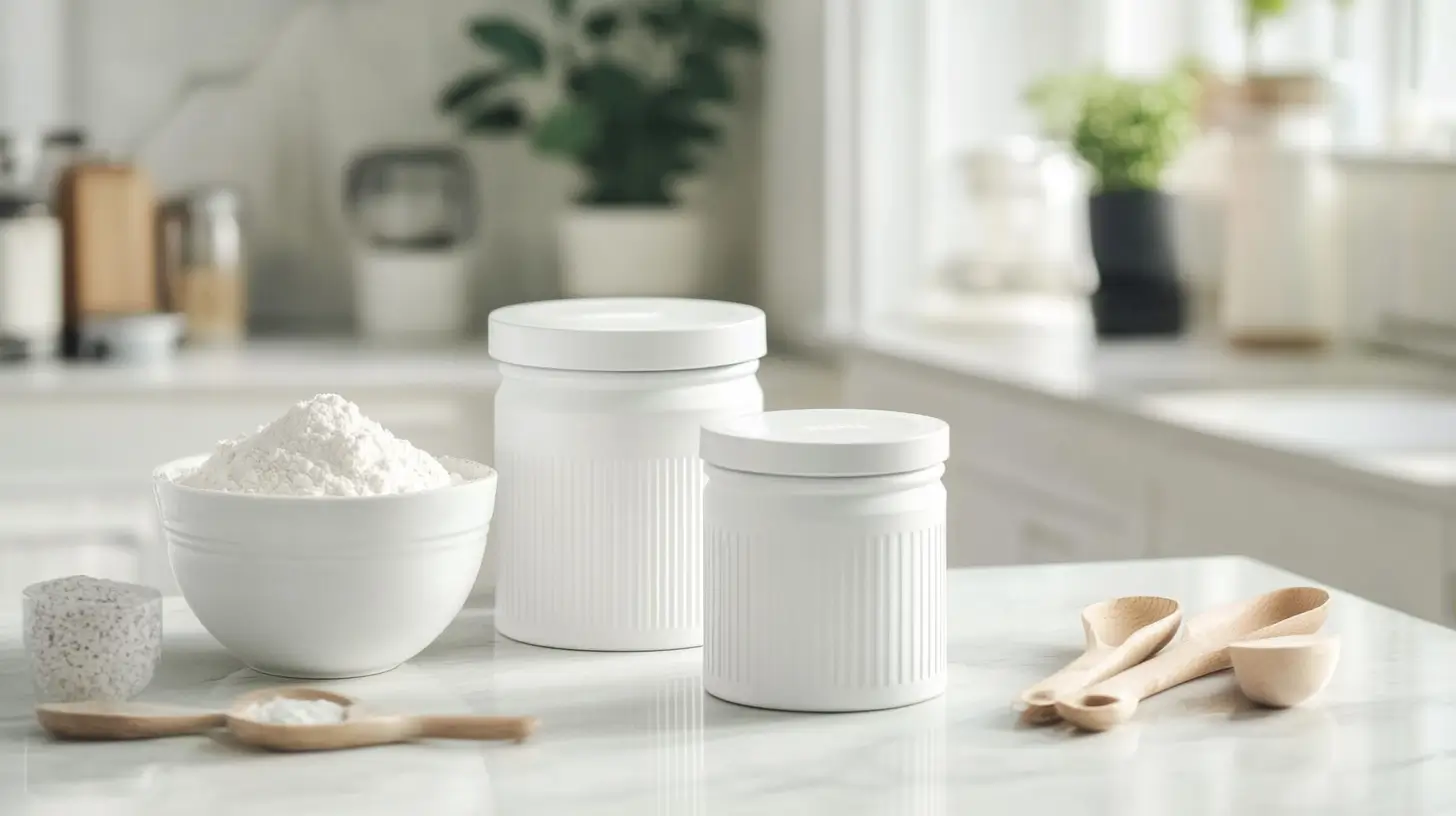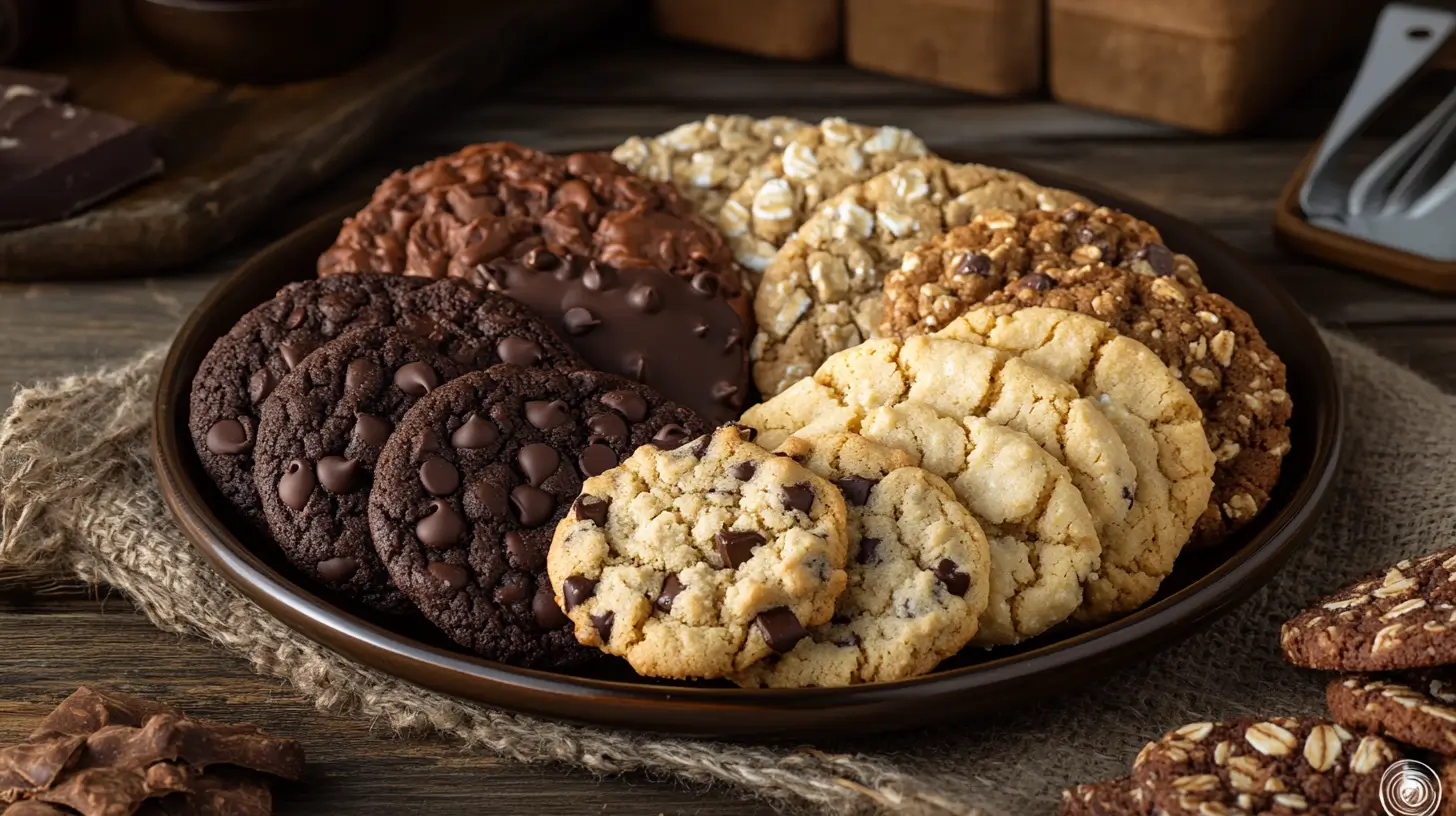Baking the perfect batch of cookies often raises questions about leavening agents. Which makes cookies rise, baking soda or baking powder? This guide explores the science, differences, and specific applications of these two essential ingredients in cookie recipes.
Understanding the Basics of Cookie Rising Agents
To bake cookies that rise beautifully, you need to understand the distinct roles of baking soda and baking powder. Both are chemical leavening agents, yet they work differently in dough.
What Are Baking Soda and Baking Powder?
Baking soda, or sodium bicarbonate, is a single-ingredient leavening agent. It requires an acidic ingredient to activate and produce carbon dioxide, which gives cookies their rise. Common acids include lemon juice, vinegar, or yogurt. In contrast, baking powder is a pre-mixed leavening agent containing both an acid (usually cream of tartar) and a base (baking soda), making it capable of rising without external acids.
- Baking Soda: Single ingredient, relies on external acid for activation.
- Baking Powder: Includes both acid and base, needs only moisture and heat to work.
The Science Behind Cookie Rising
The reaction of leavening agents determines cookie texture and height. When baking soda reacts with an acid, it forms bubbles of carbon dioxide gas. These gas bubbles expand as the dough heats, creating air pockets. Baking powder, with its dual-action formula, creates gas both when mixed and when heated.
The choice between baking soda and baking powder impacts whether cookies are light and fluffy or thin and crispy. Balancing these agents is critical for achieving your desired results.

Baking Soda vs. Baking Powder: Key Differences
Which makes cookies rise, baking soda or baking powder? To answer this, we need to examine their differences in detail.
Ingredient Composition
- Baking Soda: Pure sodium bicarbonate.
- Baking Powder: A mixture of sodium bicarbonate, an acid (like cream of tartar), and a moisture-absorbing agent (like cornstarch).
The combination in baking powder makes it versatile, but it can slightly alter the flavor of cookies if overused. Baking soda is potent and requires precise acid balance for effective results.
Activation Requirements
The activation process separates these two agents:
- Baking Soda: Requires an acidic component and moisture to release gas.
- Baking Powder: Works with moisture alone, thanks to its built-in acid. Some baking powders are double-acting, producing gas at both room temperature and during baking.
Understanding activation differences is crucial for deciding which makes cookies rise, baking soda or baking powder.
When to Use Baking Soda in Cookies
Choosing baking soda ensures specific textures and flavors in cookies. Here’s when it’s the best choice.
Recipes Requiring Acidic Components
If your cookie dough includes acidic ingredients, such as brown sugar, buttermilk, or honey, baking soda is the ideal leavening agent. Its reaction with these acids not only causes rising but also neutralizes excess acidity, ensuring a balanced flavor profile.
- Examples of acidic components:
- Molasses-based cookies (e.g., ginger snaps).
- Chocolate chip cookies with brown sugar.
Enhancing Flavor and Texture
Baking soda contributes to browning through the Maillard reaction, resulting in a rich, golden crust. It also creates a denser, chewier texture by limiting over-expansion.
Transition words like “therefore” and “thus” remind us that baking soda enhances both structure and taste when used appropriately.
When to Use Baking Powder in Cookies
For cookies with balanced acidity or no acidic ingredients, baking powder is often the go-to leavening agent.
Balanced Recipes Without Acid
If your cookie recipe lacks acidic elements, baking powder ensures proper rising without needing additional ingredients. This makes it perfect for recipes where neutrality is key.
- Examples of such recipes include:
- Sugar cookies.
- Shortbread cookies.
Double-acting baking powder extends the rising process, providing lightness without collapsing during baking.
Achieving Light, Fluffy Cookies
Baking powder works best for creating airy, soft cookies. Its controlled release of carbon dioxide ensures even rising and a tender crumb.
For a reliable way to achieve fluffier cookies, opt for baking powder in recipes without natural acids.
How to Substitute Baking Soda and Baking Powder
Whether you’ve run out of one leavening agent or need to modify a recipe, substitutions are possible with careful adjustments. Learn how to ensure your cookies still rise perfectly.
Converting Measurements Correctly
When substituting baking soda for baking powder or vice versa, precise conversions are crucial. Since baking powder is less concentrated than baking soda, you’ll need more of it to achieve the same effect.
- Substituting Baking Powder for Baking Soda:
- Use 2 to 3 times the amount of baking powder.
- For example, if a recipe calls for 1 teaspoon of baking soda, substitute with 2-3 teaspoons of baking powder.
- Substituting Baking Soda for Baking Powder:
- Use one-third the amount of baking soda.
- Add an acidic component (e.g., 1 teaspoon of lemon juice or vinegar per 1/2 teaspoon of baking soda).
Converting incorrectly can lead to flat cookies or an unpleasant taste, so always measure with care.
Adjusting Recipe Acidity
When swapping leavening agents, balancing the recipe’s acidity is essential. Since baking soda relies on acid to react, a substitute must provide it artificially if none is present. Common acids include:
- Yogurt or sour cream.
- Lemon juice or vinegar.
- Molasses or brown sugar.
If replacing baking powder, ensure the acid doesn’t overpower the flavor, maintaining a balance that complements your cookies. These adjustments determine which makes cookies rise, baking soda or baking powder, under different circumstances.

Common Mistakes and How to Avoid Them
Even seasoned bakers encounter challenges with leavening agents. Avoid these common pitfalls for consistent cookie results.
Overuse of Leaveners
Adding too much baking soda or baking powder can ruin the texture and flavor of cookies. Overuse results in:
- Baking Soda: Metallic or soapy taste, along with overly brown cookies.
- Baking Powder: A bitter, chemical aftertaste and overly puffy cookies.
Stick to the recipe’s specified amounts. When scaling recipes, adjust proportions accurately to avoid excessive rise or collapse.
Ignoring Recipe Instructions
Subtle details in recipes often hold the key to cookie perfection. Skipping steps like sifting dry ingredients or creaming butter and sugar properly can lead to unevenly risen cookies. Moreover:
- Not preheating the oven compromises the leavening agents’ activation.
- Mixing the dough for too long can deflate air pockets, reducing rise.
Following instructions precisely ensures baking soda and baking powder perform as intended, answering which makes cookies rise, baking soda or baking powder.
FAQs on Baking Soda, Baking Powder, and Cookie Baking
What Makes Cookies Rise: Baking Soda or Baking Powder?
Both baking soda and baking powder are leavening agents that help cookies rise, but they work differently. Baking soda (sodium bicarbonate) reacts with acidic ingredients, such as buttermilk, lemon juice, or brown sugar, to produce carbon dioxide gas. This gas creates air pockets in the dough, leading to a slight rise. It is ideal for recipes that contain acids and contributes to a chewy, browned texture. On the other hand, baking powder includes both an acid (usually cream of tartar) and a base (baking soda), so it does not require additional acidic ingredients to activate. Baking powder works in recipes with neutral pH levels, producing a lighter, fluffier texture. Recipes may use one or both agents depending on the desired flavor and structure. Therefore, the answer to which makes cookies rise, baking soda or baking powder, depends on the recipe’s ingredients and goals.
Does Baking Soda Make Cookies Softer or Harder?
Baking soda typically makes cookies softer and chewier by reacting with acidic ingredients to create carbon dioxide gas. This reaction forms bubbles in the dough, causing it to expand slightly as it bakes, resulting in a tender and airy texture. Additionally, baking soda enhances browning through the Maillard reaction, which not only deepens the cookie’s flavor but also adds a golden color and a slightly crisp outer layer. However, using too much baking soda can negatively impact the texture, making cookies overly soft and even giving them a soapy or metallic aftertaste. When used in balanced amounts, baking soda helps cookies maintain moisture, contributing to their softness. This makes it an excellent choice for cookies like chocolate chip or molasses cookies, where chewiness and a rich flavor are desired. The key is precise measurement to avoid altering the dough’s consistency or flavor.
When Should You Use Baking Powder Instead of Baking Soda?
Baking powder is the better choice when a recipe does not contain acidic ingredients. Since it already includes both an acid (cream of tartar) and a base (baking soda), it only requires moisture and heat to activate, making it more versatile than baking soda in neutral recipes. Use baking powder in recipes like sugar cookies or shortbread, where a light, fluffy texture is preferred. It creates a consistent rise without relying on external acids and avoids the strong flavor often associated with baking soda. Additionally, baking powder can be helpful in recipes where over-acidifying might overwhelm the flavor, as it eliminates the need to add an acidic component. However, overusing baking powder can lead to an unpleasant, chemical-like aftertaste. Therefore, choose baking powder when a recipe calls for it or when acidic ingredients are absent, ensuring balanced texture and flavor in your cookies.
What Does Brown Sugar Do in Cookies?
Brown sugar plays a crucial role in adding flavor, texture, and moisture to cookies. Its molasses content gives cookies a rich, caramel-like taste and contributes to their chewy consistency. This added moisture helps retain softness, making brown sugar ideal for cookies like chocolate chip or oatmeal raisin. Additionally, brown sugar is slightly acidic, which allows it to react with baking soda to produce carbon dioxide gas, aiding in the leavening process and giving cookies a slight rise. The sugar’s acidity also enhances browning, resulting in a deeper color and richer flavor. Substituting brown sugar with white sugar can lead to drier, crispier cookies with a less complex flavor. For cookies that need to be soft, moist, and full of depth, brown sugar is an essential ingredient. Its ability to balance texture and flavor is why it is favored in many classic cookie recipes.rful cookies
Conclusion
Leavening agents play an irreplaceable role in baking cookies. Whether you use baking soda, baking powder, or a combination of both, understanding their functions ensures consistent, delicious results.
Final Thoughts on Choosing Between Baking Soda and Baking Powder
So, which makes cookies rise, baking soda or baking powder? The answer depends on your recipe. Baking soda is ideal for acidic recipes, providing flavor and chewiness, while baking powder works in neutral recipes, yielding lighter, fluffier cookies.
With the right knowledge and techniques, you can confidently experiment with substitutions, avoid common mistakes, and achieve perfectly risen cookies every time.





